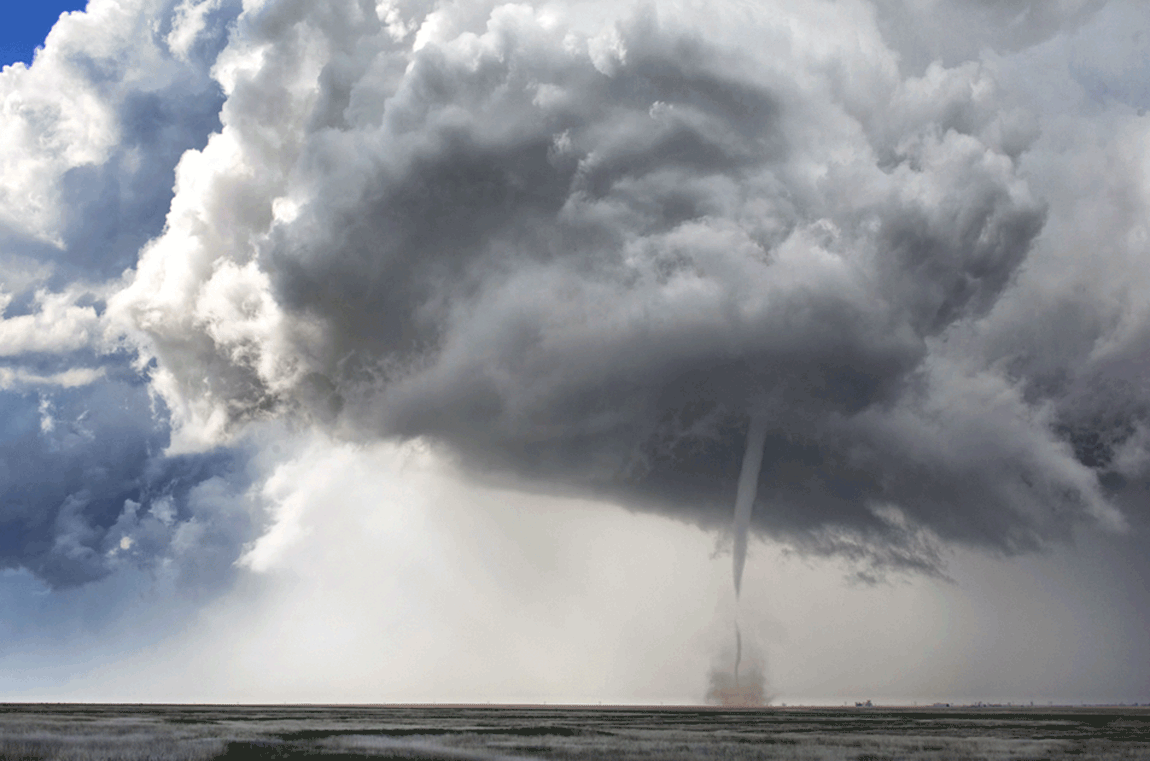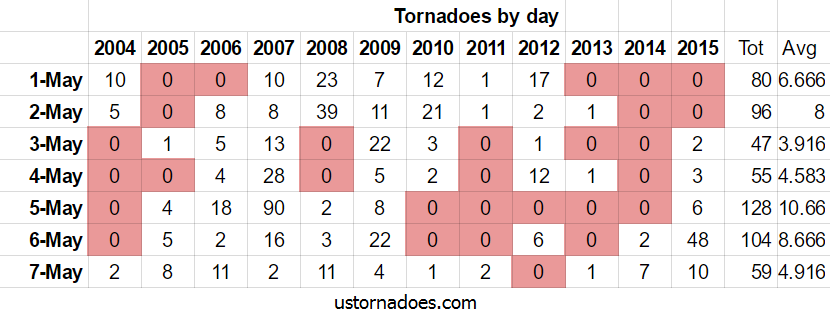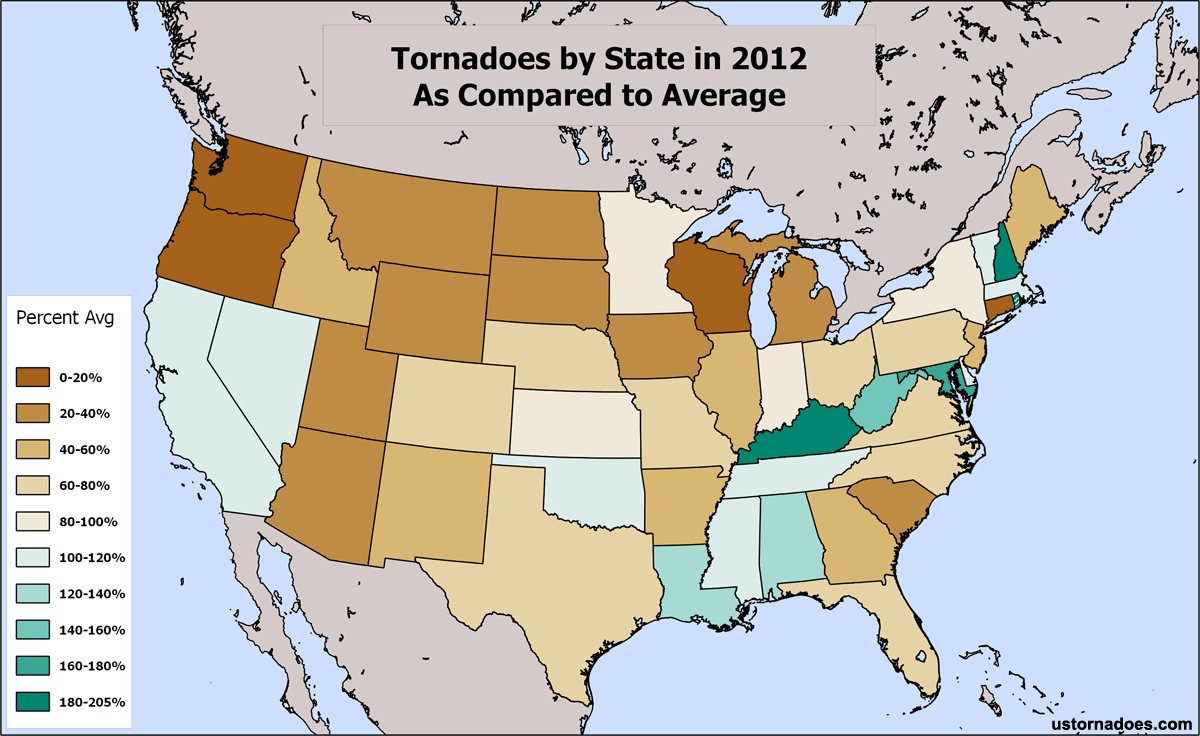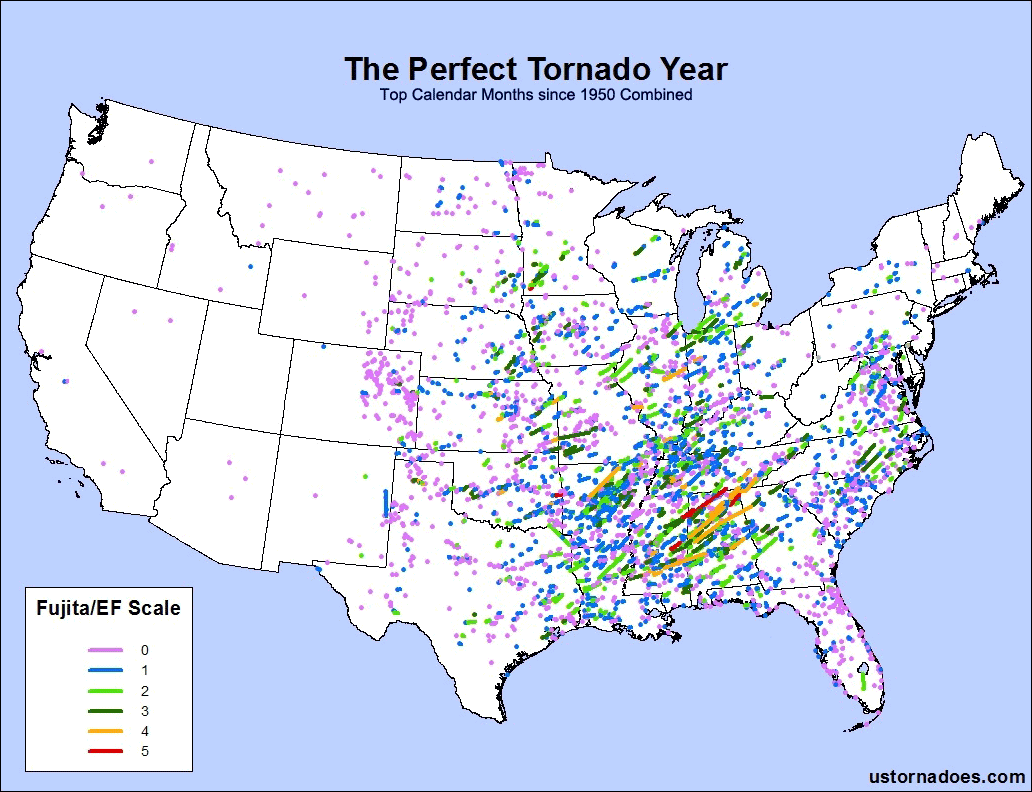
May is typically the peak tornado month for the country, but the first part of May has also proven fickle over the years. Although high-end outbreaks have occurred in early May, much like in late April, it is not uncommon for a relative lack of tornado activity during the first week of the month.
[Tornado Threat Forecast: May 2-8, 2016]
Since 2004, more than half (55%) of days between May 1-7 saw two or fewer tornadoes. Perhaps even more surprising is that over a third (35%) of those days saw no tornado reports at all. These quiet days have been offset by very active periods to start the month, including 2007 (167 tornadoes), 2008 (78 tornadoes), and 2015’s outbreak from May 6-7 (58 tornadoes).
Even a year thought of as a tornado king like 2011 saw a big slowdown in early May. There were only four tornadoes during the first seven days of the month that year. This after a record-breaking tornado month in April that included the generational super outbreak of the 27th.
If the record is extended back to 1986 (or the last 30 full years), the results are similar. The only major difference is that some longer-term patterns can potentially be identified. While the mid-to-late 1980s featured limited tornado activity in early May, the 1990s saw a fairly consistent active first week of the month.
Recent years have, for the most part, fallen back to slower starts to May for tornadoes.
Tornado climatology is an interesting thing to look at but sometimes averages can be misleading, as tornadoes do tend to come in bunches.
It is not until late May and early June that consistent and often day-to-day tornado activity becomes common around the entire country. By June, the potential for a major outbreak starts to decline as the jet stream slows and becomes less variable. However, the frequency of tornado days make this a prime choice for storm chasers who are looking to play the odds for chase prospects. This also serves as a reminder not to let your guard down after the peak of outbreak season passes, especially in the northern tier of the U.S.
It all begs the question: Are there any clues that can be taken from early May to predict activity later in the month?
The results are fairly mixed and no concrete conclusions can be drawn. Since 1986, the first week of May has seen below average tornado activity in 20 of the 30 years. In 11 of those years, below average tornado activity continued for the final 24 days of the month, while in nine cases, at or above average tornado counts were observed for the remainder of the month. In general, those are pretty even odds with only a slight favoring of slow starts to the month staying below average into mid and late May.
[May tornado outlook: Odds favor near normal]
When the first week of May has been above average, it’s an even split of five years finishing with a slow rest of May and five years keeping the active pace up.
Essentially, no clear conclusion can be made simply from the amount of tornado activity observed in early May. If one thing is certain, it’s that even in the slowest severe weather seasons, tornado activity does generally become consistent by late May into June.
Latest posts by Quincy Vagell (see all)
- How peak tornado season ends up active or quiet in the Plains - May 14, 2019
- Low tornado count set to continue through the end of April, but it’s too early to call the season - April 21, 2018
- June 2016 tornado outlook - May 23, 2016



